Finding a new niche
Get inspired by the winners of our 2022 Top 4 Under 40 program. | 8
Wild bees and biodiversity
Impact of rotationally grazed pasture. | 16
Farmer mental health
The conversation has been started, but work remains to be done. | 18

Finding a new niche
Get inspired by the winners of our 2022 Top 4 Under 40 program. | 8
Wild bees and biodiversity
Impact of rotationally grazed pasture. | 16
Farmer mental health
The conversation has been started, but work remains to be done. | 18

Neudorff North America is an innovative leader in ecologically responsible pest solutions for farmers, turf professionals, nursery and greenhouse growers.
Our effective and affordable solutions for disease, insect pests, pest slugs and snails have limited impact on applicators, beneficial insects and the environment. They are an important part of integrated pest management programs.
Neudorff has you covered from the ground up.
Powerful disease protection for your fruit and vegetable crops with a fraction of the copper found in other copper fungicides.
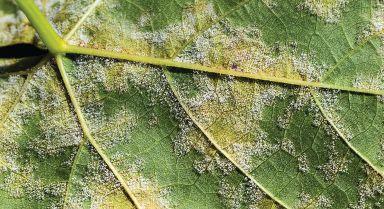
The soft-bodied insect specialist. Kills aphids, mites and whiteflies on contact in a wide range of crops. A great tank mix partner.
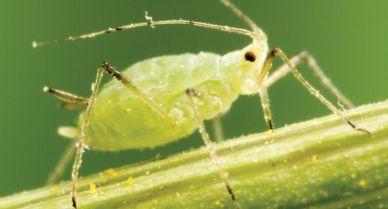
A summer and dormant oil. Controls all life stages of insects and mites, and supresses powdery mildew.
®
A durable iron phosphate bait that offers excellent crop protection from slugs and snails.
A durable, fast acting spinosad bait, active against a variety of ants, cutworms, spotted wing drosophila and wireworms in a wide range of crops.
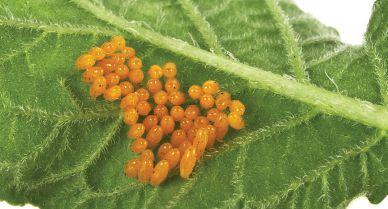
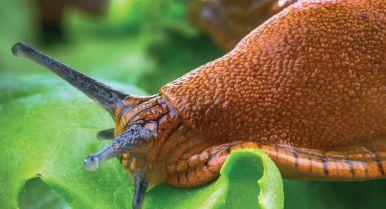

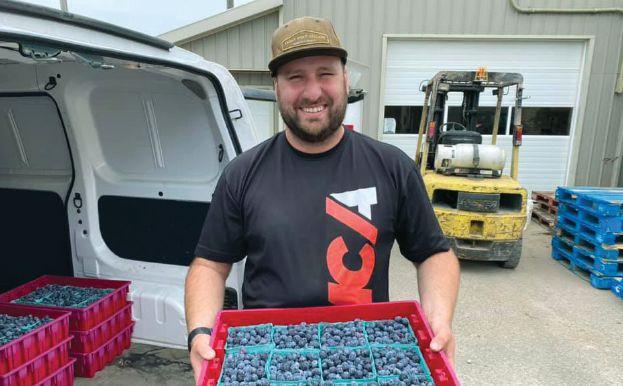





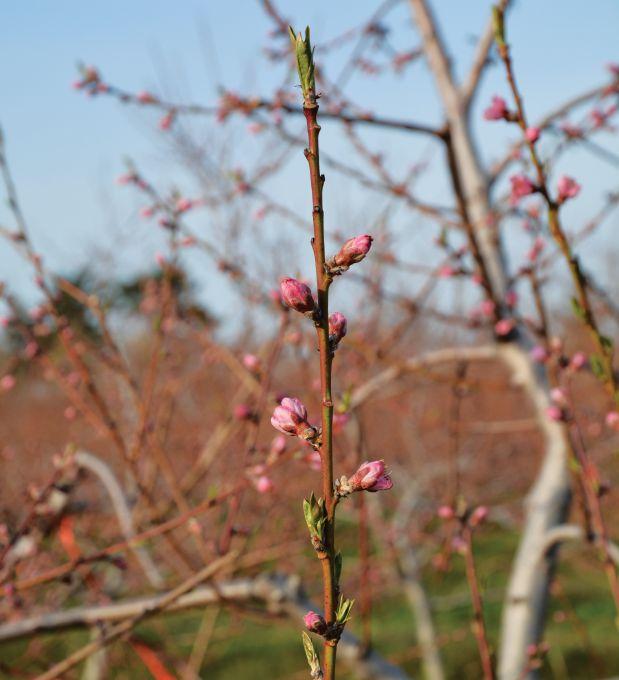
8
Finding a new niche
Get inspired for the 2022 season with the winners of our Top 4 Under 40 program.
Peach-thinning potential
First-of-its-kind ingredient shows promise for peach growers in recent trials.
Editorial 4
Industry News 6
Disease Deep-dive 22
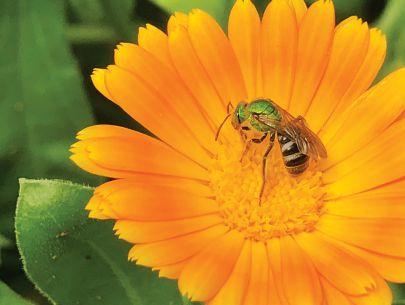
16
Organic Perspective
The buzz on wild bees for improving biodiversity in rotationally grazed pasture lands.
Peach blossoms on a branch. See page 12. Photo by AdobeStock.
BY ALEX BARNARD
BY CECILIA STUART AND SAMANTHA MILLS
18
We need to talk about farmer mental health
The conversation has started, but there remains work to be done BY
STEPH COELHO
Marie-Claude Bibeau, minister of agriculture and agrifood, along with Daniel Vandal, minister of northern affairs and minister responsible for the Canadian Northern Economic Development Agency, have launched a new phase of the Local Food Infrastructure Fund (LFIF), with an investment of up to $20 million. This funding will assist community-based and not-forprofit organizations in creating long-term solutions to address food security challenges.
This new phase of the LFIF has been tailored to meet the needs of Indigenous, Northern and remote communities by providing funding to help them build
a food system that will meet both current and future community needs.
Program details and requirements are available now, and applications for this intake phase can be submitted from June 1 until July 15.
Eligible projects must be infrastructure-specific, community-driven and dedicated to improving access to healthy, nutritious, and local foods for Canadians at risk of food insecurity. Grant funding for projects can range from $100,000 to $500,000 to support larger initiatives that will have a lasting impact in communities.

Cohort Wholesale has announced Gatten, a unique mode-of-action fungicide, has been granted registration by Health Canada’s Pest Management Regulatory Agency (PMRA) for control of powdery mildew in grapes, cherries and cucurbits.
As the first and only
10
FRAC Group U13 fungicide, Gatten controls powdery mildew that may have developed tolerance to Groups 3, 7 or 11 fungicides and has shown no cross-resistance to existing products.
Gatten inhibits the powdery mildew pathogen from ab-
13
Between 2010 and 2020, the number of registered pest control products increased from approximately 6,000 to more than 7,600.
sorbing nutrients from cherries and grapes, making it impossible for the pathogen to grow and expand. It also limits the development and dispersion of viable spores, helping to break the disease cycle. Additionally, Gatten has translaminar movement, which provides protection to both sides of the leaf and improves control, especially when foliage is dense.
101
Technical and sales support for Gatten is provided by Cohort Wholesale. For more information about Gatten fungicide, visit CohortWholesale.com.
477 new minor uses
Sales of pest control products in Canada have increased from 101.1 million kilograms of active ingredients (kg a.i.) in 2014 to 121.3 million kg a.i. in 2018
12 emergency uses
(products registered for up to one year for the emergency control of seriously detrimental pest infestations).
71.1% of pesticide sales in Canada were agricultural sector products in 2018





Looking for some inspiration for the 2022 season? Check out these highlights from our conversations with three of the winners of our second annual Top 4 Under 40 program.
BY ALEX BARNARD
Experience is invaluable, but there’s also something to be said for a different or new perspective. February 2022 saw the second iteration of Fruit & Vegetable’s Top 4 Under 40 program, wherein we ask our readers to nominate the passionate leaders, innovators and hard workers among the under-40 crowd in the Canadian fruit and vegetable industry.
In speaking with three of our winners (the fourth was, unfortunately, not available for comment at time of publication), we learned how they came to the fruit and vegetable industry, their challenges and accomplishments, and what lies ahead. Here are some of the highlights of those conversations.
Nick Vranckx, winemaker at Blueberry Hill Estates in Norfolk County, Ont., brought some new ideas with him when he returned to the family berry farm after attending Brock University and at wineries around the world.
“My parents bought the farm back in 2004 and, just like anything your parents buy, you end up getting roped in soon after,” Vranckx says. “I’ve added to our farm operation a bit of a vineyard – we have six acres of grapes here, too.
“We went in the direction of establishing a winery onsite. That’s what I went to school for – oenology and viticulture, so I’ve got the wine and grape background.”
go to market in late July and August, when there’s an oversaturation of fruit on the market.”
Vranckx is proud to say that he’s turned this challenge into a strength of their brand over time, with some assistance from the inclusion of value-added products that allow the operation “to turn [their] produce into something [they] can use yearround to sell and provide to other customers that are looking for something that’s not just fruit,” he says.
In addition to grape and fruit wines produced on-site, Blueberry Hill Estates uses their berries and other local produce in jams, preserves, pickles, juices, and assorted baked goods and ready-to-eat food products sold through the operation’s retail outlet and various local farmers’ markets.
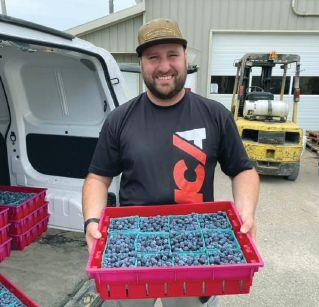
ABOVE
The roughly 15-acre blueberry patch Vranckx’s family owns was first planted in 1973 and, as far as he knows, it’s the oldest commercial highbush blueberry operation in Ontario.
Finding enough workers and competing in a crowded domestic market are the main challenges for Vranckx’s operation.
“Growing blueberries in Canada is sort of an oxymoron because it seems like everyone’s growing them coast-to-coast,” he says.
“We have to compete a lot with British Columbia when we
local market.
“I can say that every berry that is marketable is sold through this farm. For some other farmers, if the fruit’s a little squished or not the right colour, they don’t put it to market, whereas we have a home for everything we pick here.”
He adds, “Some years, when the market is saturated beyond feasibility for selling in those channels, we’ve shifted from what has sometimes been 80 per cent towards wholesale or that type of market down to 40 per cent or so, and shifted [that extra amount] towards wine and juice production for other clients.”
“Luckily, some of the rules and regulations in Ontario for wine-producing [say] fruit has to come from Ontario if you’re going to sell it through an Ontario store,” Vranckx notes. “So, we work quite closely with some other wineries, building that rapport.
Jason Lanoue ended up working in horticulture in a bit of a roundabout way. “I was involved in agriculture with my grandparents, growing up. It kind of sticks with you subconsciously, so there was always that seed that got sown when I was young,
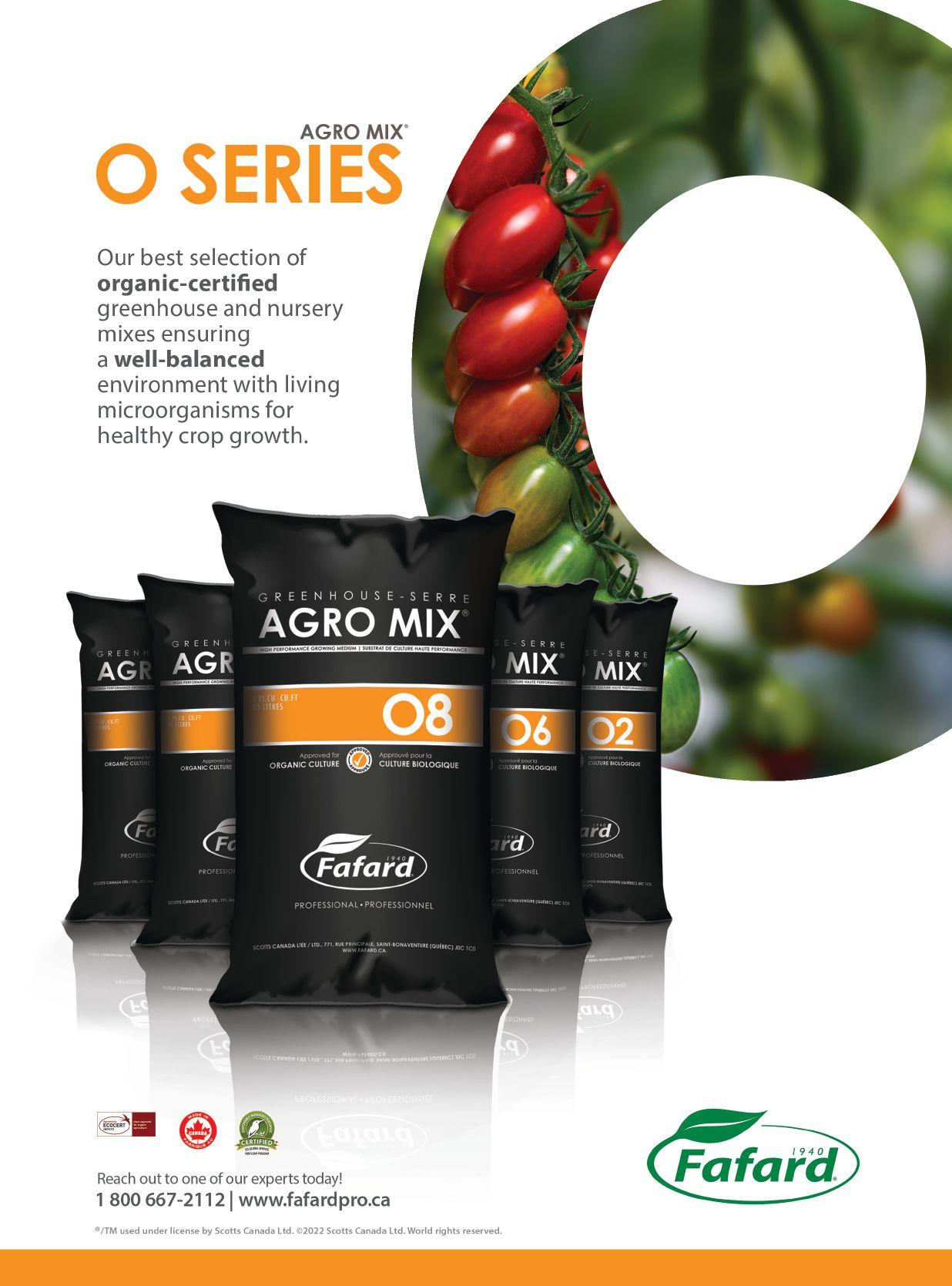




having a relative who had a farm – liking it as a kid, being outside and able to get your hands dirty,” he says.
“And then I went to the University of Guelph for biochemistry; I originally wanted to be a doctor,” Lanoue says. “Being at one of the world’s best agricultural schools, you get exposed –through your courses, the people you meet, the professors – to agriculture in general. It kind of shook something loose – ‘Maybe this is something I want to go into and have a career in.’”
“After graduating, I got a phone call from an OMAFRA employee. They wanted me to blend my science basis with some of the agricultural work they were doing. So, from there, I ended up back at the University of Guelph for my masters and my PhD,” he adds.
“Really, I got back into it by happenstance – from being at the university, from being around people and getting the opportunity to not only do what I thought agriculture was as a child – tractors and fields – but bringing in some of the more rigorous biochemistry, genetics I had learned.”
Now, Lanoue is one of two greenhouse scientists who work out of Agriculture and Agri-Food’s Harrow Research and Development Centre in Harrow, Ont.
“Our focus right now is on lighting in greenhouses – how we can utilize LED lights to either improve growth during the winter months or to make it more sustainable [and economical]. It might sound crazy that we’re going to be using lights and electricity to make growth more sustainable, but there are some things we can do, such as 24-hour lighting.”
Growing plants under lights 24 hours per day has been in the works for decades – since the 1930s, when the first paper was published talking about the possibility. Lanoue and fellow Harrow greenhouse scientist Xiuming Hao initiated a project three or four years ago to see if modern LED lighting and the ability to manipulate the light spectrum would lead to a different outcome – which it has.
“We thought using one colour [of the light spectrum] during the day and another colour at night would kind of jog the plant’s memory into thinking it’s under normal conditions,” he says. “We did that in a few greenhouses, not expecting anything to happen, and lo and behold, five or six months later, the plants were perfectly fine. They didn’t show any of the leaf injury you would typically see under 24 hours of light [per day].
“Since then, it’s really ballooned. [Now,] our program mainly focuses on that – trying to optimize it, understand how different crops react to it, even different cultivars within crops.”
Alex Chesney grew up on her family’s fruit and vegetable farm, Thames River Melons, in Innerkip, Ont.
“I got into the industry because I was born into it, very fortunately,” she laughs. “My dad started our farm in the early 80s. He grew an acre of melons, which was pretty new for Ontario at the time, kind of experimental. But it was a success and we’ve now grown to grow lots of other crops.”
Returning to the farm full-time in 2019, Chesney now oversees the on-farm and farmers’ market aspects of the business, in addition to managing and hiring staff.
“I am also a registered dietician, so I use those skills and


help with recipe development and marketing,” she says. While Chesney wasn’t sure if it was always realistic to combine her training in food and nutrition with working on the farm, it’s an avenue she’s chosen to explore.
“The more I went through school and through my practical training, I realized agriculture is a missing piece of nutrition education. I thought it was a really cool opportunity to dig into that a little bit more and draw those connections more clearly,” she says.
“For a long time, [agriculture and nutrition] weren’t really talked about in the same conversations. I think [the shift has] been very consumer-driven. Consumers are asking more questions about where their food is coming from and how it’s grown and, as a food expert, a dietician is often the recipient of those questions,” Chesney notes.
“So, we need to be knowledgeable – and again, I was very lucky to be born into this and have that knowledge, so I’m trying to tie them together more and show others that connection, as well.”
June 2021 marked the installation of an on-farm kitchen. “That’s been a life-long dream for me, so I’m really excited that it’s here,” Chesney says. The kitchen is currently being used for baking and making ready-to-eat products with the farm’s produce, but the aim for the coming season is to focus more on small events, workshops and experiences, ideas developed in partnership with the local tourism board.
One on-farm experience Chesney plans to launch this summer is called the “harvest brunch.”
“It’s part workshop, part tour, part cooking class and part meal,” she say. “It’s very immersive – we’ll pick the produce together, we’ll do some cooking and then share a meal together, and I will weave in nutrition and agriculture education throughout it. And that’s able to come to life because of the kitchen.”
Interested in hearing more from our winners? The full interviews will be available through our podcast, AgAnnex Talks. The first episode, featuring Nick Vranckx, goes live on April 20 and can be found at https://www.fruitandveggie.com/podcasts/ top-4-under-40-nick-vranckx/.•

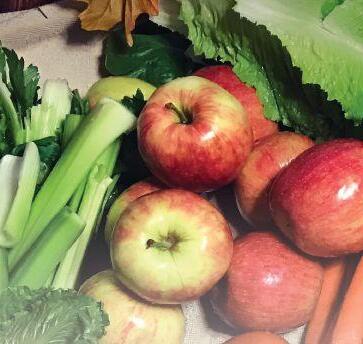


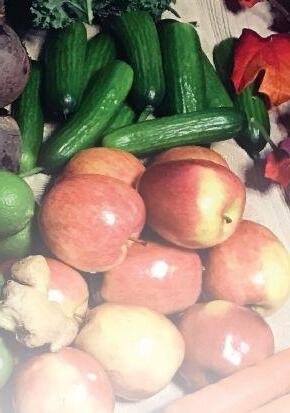

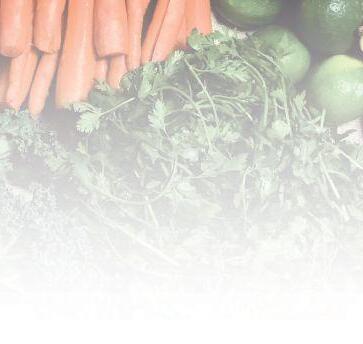
Choosing the right insecticide makes all the difference to your production and profitability. FMC has you covered, with six proven control products to protect your high-value crops.

Altacor® insecticide is a unique and proven mode of action that delivers consistent residual activity on all life-cycle stages. Protect your pome and stone fruit, bushberry or grape yield and quality from pests such as oblique-banded leafroller, apple maggot1, cherry fruit fly1, apple clearwing moth1 and more.
Beleaf® 50SG insecticide, a Group 29 product, targets piercing and sucking pests effectively. Protect your strawberries, potatoes, root vegetables and greenhouse crops from thrips, aphids, lygus bugs and whitefly feeding damage.
Introducing the new highly concentrated formulation of Coragen® MaX insecticide. Just one 2-litre jug of Coragen MaX insecticide covers more acres with less. It is the same great product that quickly stops chewing insects from feeding and delivers control at all growth stages. Protect your potatoes, root vegetables, sweet corn and greenhouse vegetables from yield and quality damaging pests such as cutworms, armyworms, Western bean cutworm, Colorado potato beetle and European corn borer.
Use Exirel® insecticide early to give pome fruit, stone fruit, blueberries and root and brassica vegetable foliage the protection it needs during the most critical stage of development. Translaminar and locally systemic movement, plus rapid absorption ensures the product moves through the plant quickly to control a cross-spectrum of sucking and chewing pests like cabbage looper, armyworms, spotted wing drosophila, leafrollers and leafminers.
An economical, broad-spectrum insecticide that protects your onion, carrot and brassica crops from insects such as cutworms, cabbage looper and crucifer flea beetle.
Delivers fast root uptake to protect brassica leafy and root vegetables from early season pests, such as cabbage maggot, diamondback moth and flea beetles. Now registered for transplant tray drench application in brassica vegetables.
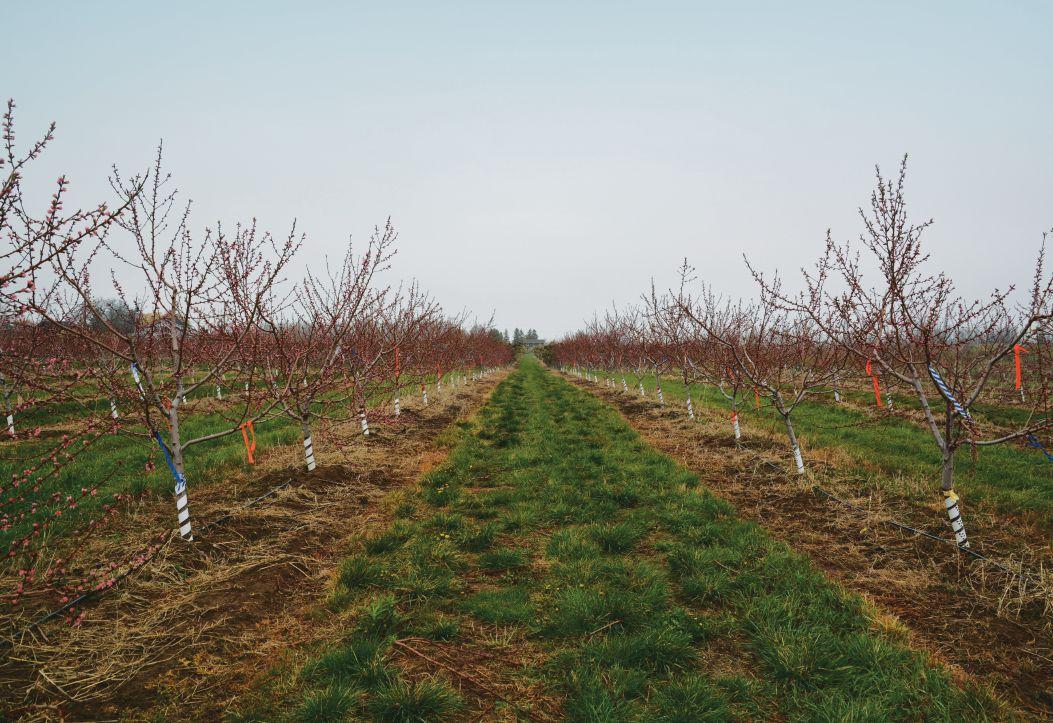
First-of-its-kind ingredient shows promise for peach growers in recent trials.
BY KAITLIN PACKER
Canadian peach growers currently rely on the labour-intensive process of hand thinning to ensure a proper fruit load – and the cost behind it can be one of the biggest profit variables they face each season. Based on a research project evaluating a new active ingredient for chemical thinning in peaches, it’s possible there’s a solution coming to meet that challenge.
John Cline, professor of tree fruit physiology at the University of Guelph, is the principal investigator for research trials studying a new compound called 1-aminocyclopropane-1-carboxylic acid (ACC) in peaches. Partnering with Kathryn Carter, fruit specialist with the Ontario Ministry of Agriculture, Food and Rural Affairs (OMAFRA), their goal is to determine whether the compound is effective for thinning peaches and beneficial for fruit quality and yield.
“Up until this point, there’s been really no compound that can thin peaches chemically,” Cline says. This task is usually accomplished through
ABOVE
hand-thinning, the process of manually removing excess fruit off the trees in late June or July so the remaining fruit can grow to a marketable size.
Funded by Valent Canada and Valent Biosciences USA, Ontario Tender Fruit Growers and the British Columbia Fruit Growers Association, the long-term goal of the project is to develop a product that’s similar to Accede, which was recently approved for registration by Valent Biosciences in the USA. “This work will hopefully help with the registration of this compound for peach growers in Canada in the future,” says Cline, who notes the Canadian product will be formulated as a granular rather than a liquid like they have in the USA.
A naturally occurring hormone in most plants, ACC is involved in the production of ethylene, which triggers senescence. “It’s augmenting or helping the tree to generate ethylene, and the ethylene is causing the fruit to drop,” says Cline, who
Experimental Harrow Dawn orchard just prior to bloom, on May 4, 2021.
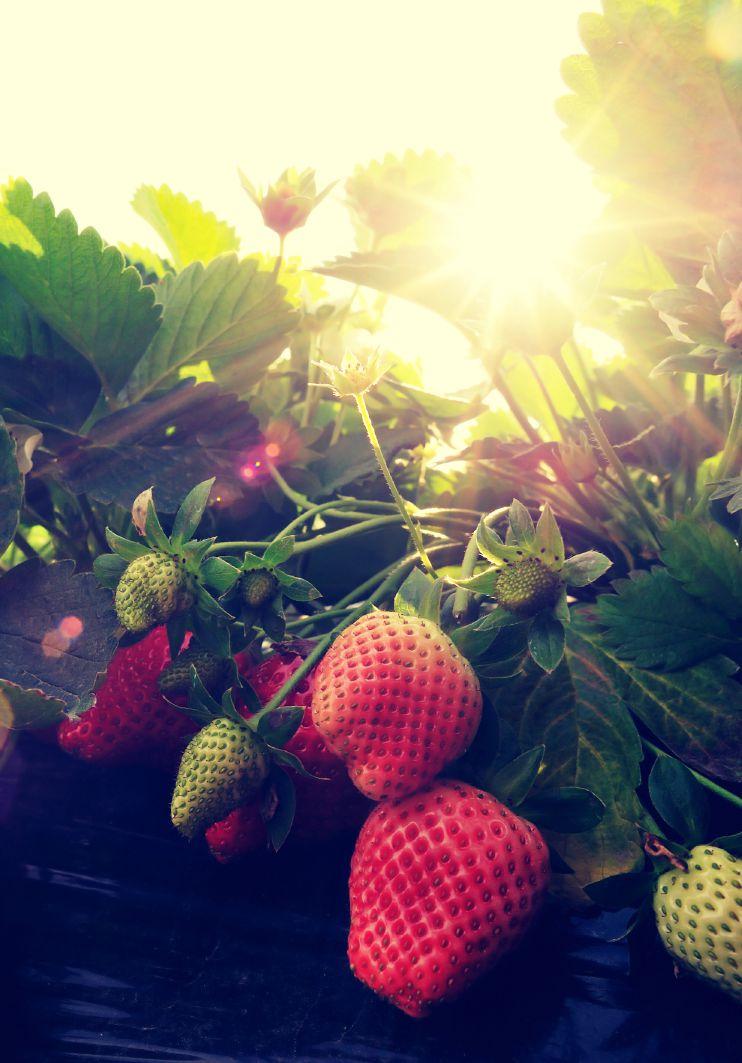
focused on finding the ideal rate in the first year of the three-year project.
While they had completed some preliminary experiments on a variety called Red Haven at their research station, the first field trials were conducted on an early peach variety called Harrow Dawn and a mid-season peach called Vivid. Cline says they chose them because they are common for the region and the two commercial orchards participating in the trials – Hipple Farms in Beamsville, Ont., and Sunnydale Farms in Jordan, Ont. – provided ideal trees for the trials. “We always try to do some research studies if someone asks,” says David Hipple, owner of Hipple Farms. “I said sure because if this works, it’s a real game changer.”
The trial compared two concentrations of the product – 300 and 600 ppm (parts per million) – at pink bud through bloom until the fruit were 20 millimetres (mm) in diameter. The researchers discovered that applying ACC at 300 ppm caused little to no thinning, whereas applying it at 600 ppm caused overthinning. “We know the product works, but in the future we need to fine-tune the rate, find an optimal rate in between,” Cline says.
One of the reasons for overthinning may have been due to the cold temperatures in the spring, which are known to increase thinning. In fact, the temperatures were so cold when they applied ACC that Cline says it’s amazing the compound worked at all. “I say amazing because for apples, when we applied thinning compounds at cold [temperatures], they generally don’t work well.”
For Harrow Dawn, they found the application was more effective at pink bud and full bloom than after bloom. They split the application of ACC in the Vivid variety by applying 300 ppm at pink bud and 300 ppm at full bloom, Cline says,

explaining that “the goal there is to see if you can get improved thinning by splitting the application and, in fact, we saw that improvement.”
While the trial’s main objective was to determine an optimal rate, the reduction

in labour for hand-thinning was another major factor they were trying to test. For Harrow Dawn, ACC reduced the time and cost to hand-thin by up to 81 per cent. For Vivid, depending on the rate, it reduced it from 22 per cent to 74 per cent. “Our ideal target is to reduce labour by 50 per cent with this product and then do minimal hand-thinning,” Cline says.




• Protects fruit & veg. crops from: Botrytis, Powdery Mildew, Anthracnose, Early Blight, Gummy Stem Blight, Phomopsis, Downy Mildew & Leather Rot (see label for det ails)
• 0 day PHI & unique mode of action to manage resistance



He notes it can take 50 hours per acre to hand-thin a peach orchard and, with other factors such as COVID-19, there’s the added challenge of labour availability. Since Hipple Farms has 65 acres, that adds up quickly. “Thinning is our profit margin, we always say,” Hipple says. “If we have to thin a lot and it’s a heavy year, we still don’t make that much because we spend $100,000 thinning.”
The labour efficiencies were not only seen in hand-thinning, but also at harvest. For Vivid, ACC increased fruit size to the extent that up to 80 per cent of the fruit could be harvested on the first harvest date in August. “Hopefully we’ll continue to see that, so if we can harvest more fruit on one harvest date, that will improve efficiencies for harvesting,” Cline says. With Harrow Dawn, there wasn’t much of an increase in fruit size, however. Part of that may be due to it being an earlier variety that’s already harvested in late July, rather than August.
Dawn, they didn’t see an effect on fruit quality, including firmness, sugar concentrations or acidity.
HOPEFUL FOR CONTINUED TRIALS WITH ACC
While the first year of trials has uncovered some important answers about ACC in peaches, there’s still work to be done. “The one rate they tried took everything off the tree and the other rate […] they tried barely touched it, so that tells me we still have to finetune the rate,” Hipple says. “But it works.”
“It’s all about timing,” Hipple says. “The earlier you can thin, the more size you get at the end.”
“It’s all about timing,” Hipple says. “The earlier you can thin, the more size you get at the end.” That’s why ACC could benefit growers at harvest. “If you can thin everything early, you might be able to leave a few more peaches on the tree and then you would save labour and, at the same time, you would potentially have a better yield.”
Although the fruit may have been slightly more mature with the Vivid variety, they did see an improvement in fruit firmness with no effect on sugar concentrations or acidity. With Harrow
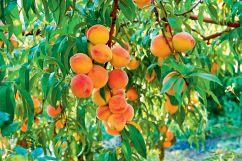
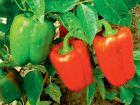

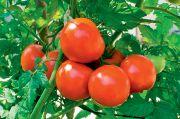
According to Cline, ACC is likely the first ingredient of its kind in the world. There are a few chemical thinners for apples and pears registered in Canada –and the hope is that ACC would also be approved for plums eventually.
Hipple already uses a thinning compound on his ten acres of pears and, as a result, he doesn’t need to send a crew to hand-thin the trees at all some years. It reduces labour that would normally take a couple weeks down to just a couple days at the most. He hopes to see the same benefits in his peaches. “This is the first year, but it looks like there’s something there and that’s super exciting,” Hipple says.
Planning is in process for ACC trials in 2022, but Cline is hopeful about what he’s already seen from the compound – from a reduction of labour to an improvement in fruit size with fewer fruit to pick, pack, store and process. “It’s very unique,” Cline says. “There’s really no compound like this.” •
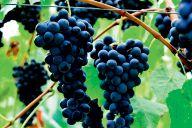

Preventative
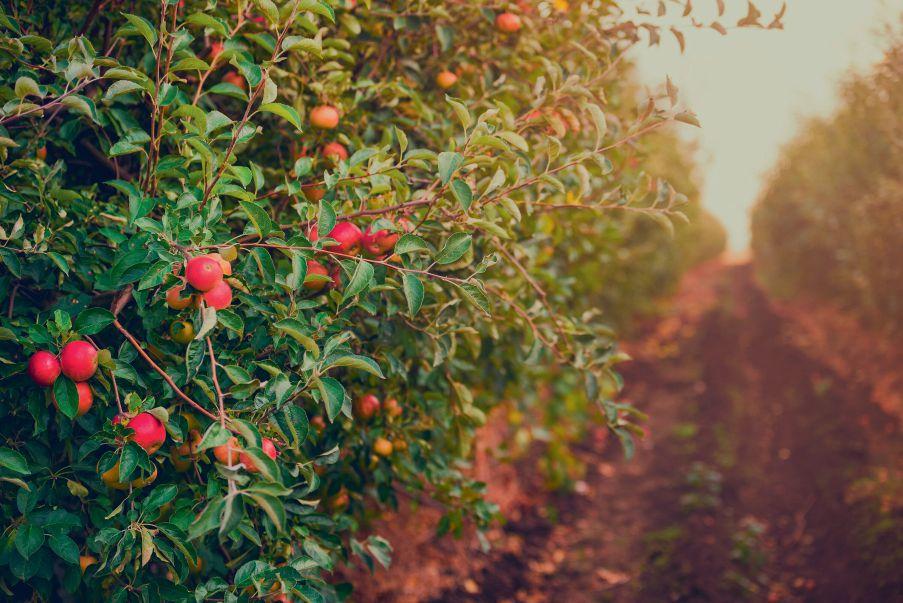


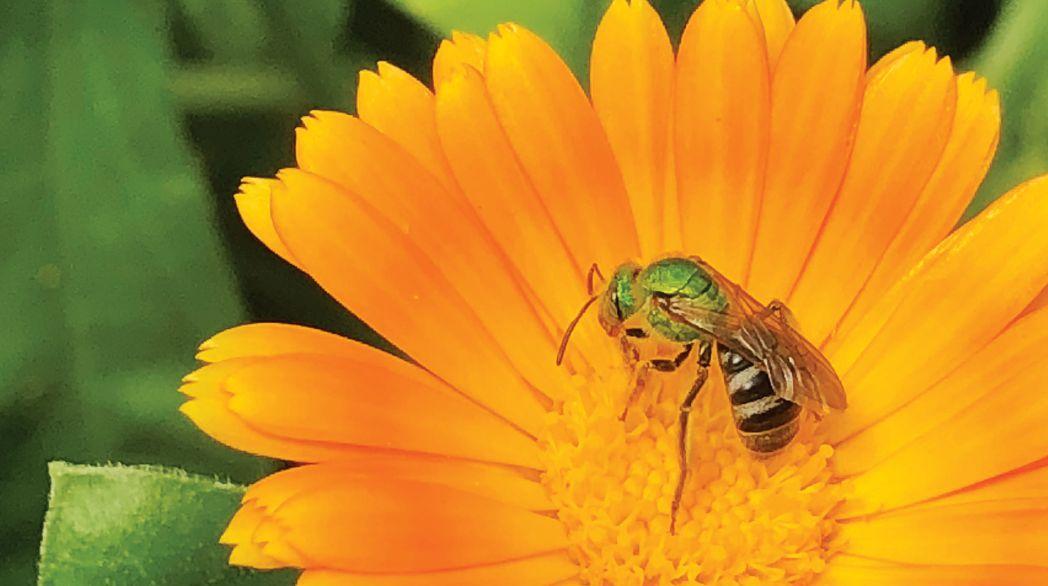
ABOVE
Agapostemon virescens (bicoloured striped-sweat bee) on a calendula located on an organic farm. This nesting bee is quite common and is known for its striking colour.
Yorkshire Valley’s annual Eco-Scholar award is granted to Canadian students aged sixteen and older who are passionate about agriculture as a force of societal good. Each year, four Eco-Scholars are awarded a total of $10,000 to support leadership in organic and regenerative research and practice.
At the 2022 Guelph Organic Conference, recipients of the 2021 Eco-Scholar award presented their winning research projects on organic and regenerative farming practices. One of these presenters was Kyr Lightburn, a PhD student in the department of plant agriculture at the University of Guelph. Lightburn’s research focuses on supporting diverse bee populations in and around agricultural systems. They are part of a larger group of young researchers investigating how to improve biodiversity in agricultural systems – a pressing issue in light of the rapid decline in global biodiversity.
WHY
Bees serve a vital pollination function in agricultural systems. Roughly 35 per cent of the plants
we eat rely on pollinators to reproduce, including crops like almonds, apples, blueberries, peaches and soybeans. Although honeybees and bumblebees are the most well-known species within the Apidae family, thousands of wild bee species can be found across North America. Not every species produces honey, lives in hives or colonies, or has stingers, but each serves a vital role within their ecosystem as key supporters of plant abundance and diversity.
To support wild bee populations, habitats need to meet specific requirements. These include:
• A wide variety of flowering plant species;
• Nesting opportunities: some bees live in the ground, woodpiles and the grass. Soil
• damage can therefore have a negative impact on ground-nesting bees;
• Water sources, include ponds, puddles, streams, lakes and dew;
• Connected landscapes: some bee species will not fly very far from their homes in search of resources (bumblebees will only fly about five kilometres away, solitary bees less than that),